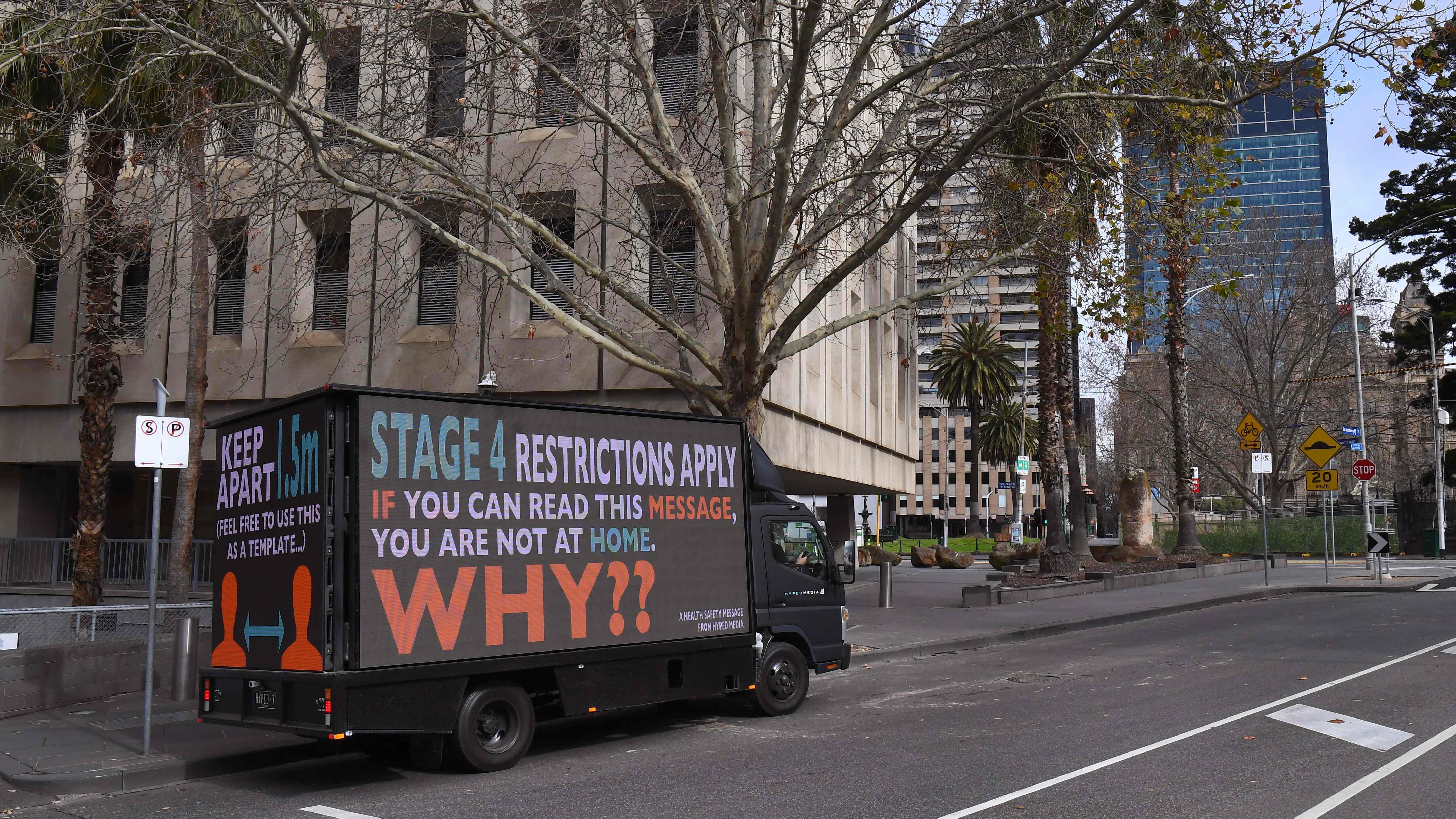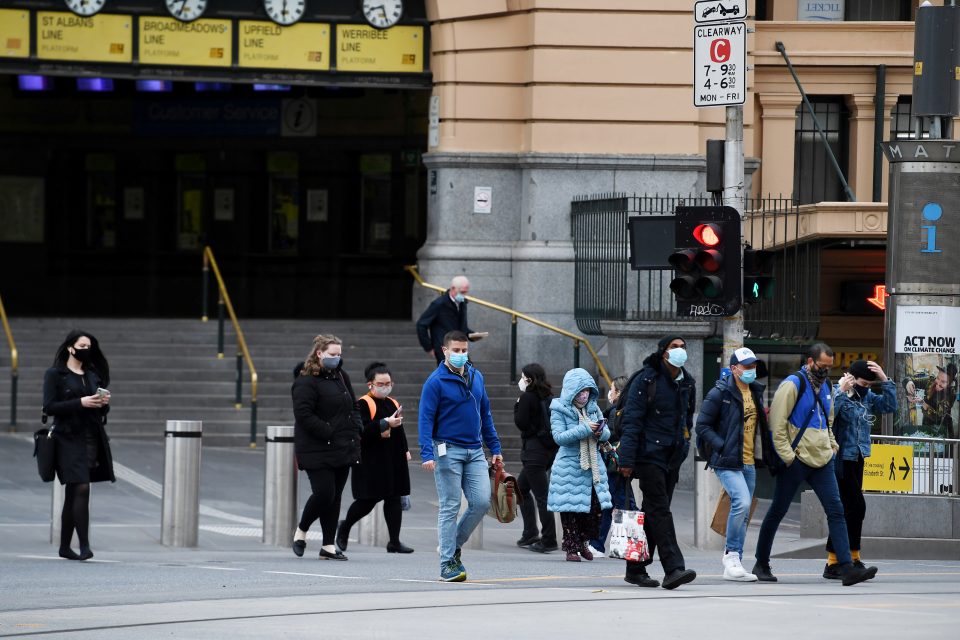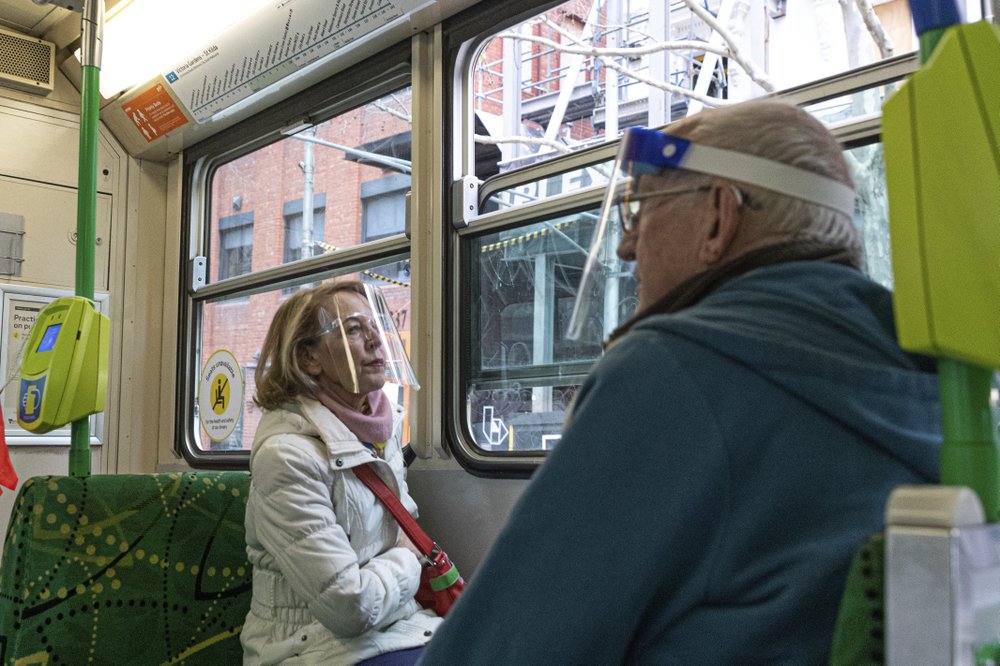01:08

Australia's second-biggest city Melbourne began the first day of a six-week total lockdown on Thursday.
Most shops and businesses closed to contain a second wave of COVID-19 infections, yet raising new fears of food shortages, economic downturns, and confusion and uncertainty about the virus.
From Wednesday night, Melbourne, the capital of Victoria state, will close retail, some manufacturing and administrative businesses as part of a six-week lockdown. More than 250,000 people were thrown out of work on Thursday. Those whose jobs are deemed essential need government-issued permits to travel the near-empty streets to get to their jobs.
The new measures are expected to double the number of jobs affected by coronavirus restrictions to around 500,000 and along with those working from home will keep 1 million people from moving around for work, Victoria state premier Daniel Andrews said.

A lone shopper walks down the usually busy Degraves Street laneway during lockdown in Melbourne, Australia, Wednesday, Aug. 5, 2020. /AP
A lone shopper walks down the usually busy Degraves Street laneway during lockdown in Melbourne, Australia, Wednesday, Aug. 5, 2020. /AP
Threats to spill
Shops were shut and streets were deserted in the city of about 5 million people, the capital of Victoria state, which reported 471 new COVID-19 cases and eight deaths on Wednesday.
The Victorian outbreak threatens to spill into other states. New South Wales reported 12 new coronavirus cases on Wednesday. There were no cases reported in other states and territories.
"We've flattened that curve once, we'll flatten that curve again," Australian Health Minister Greg Hunt told reporters.
Victorian Premier Daniel Andrews urged Melbourne residents, who have already endured weeks of less severe lockdown, to stay calm amid a surge in demand at supermarkets.

People wearing face masks are seen outside Flinders Street Station in Melbourne, as the city operates under lockdown restrictions. /Reuters
People wearing face masks are seen outside Flinders Street Station in Melbourne, as the city operates under lockdown restrictions. /Reuters
Economic and welfare hardship
The Melbourne lockdown is not only hitting the local economy, it also accounts about a quarter of Australia's economic activity.
Prime Minister Scott Morrison said Thursday that the lockdown, which extends across Victoria state but is less restrictive beyond Melbourne, was expected to cost the national economy up to 9 billion Australian dollars (6.5 billion U.S. dollars) in the September quarter.
The government forecast the lockdown would push up Australia's underlying unemployment from just over 11 percent to almost 14 percent.
"This is a heavy blow. A heavy blow," Morrison said.

Two commuters wearing face shields are seen as they travel by tram during lockdown in Melbourne, Australia, Aug. 5, 2020. /AP
Two commuters wearing face shields are seen as they travel by tram during lockdown in Melbourne, Australia, Aug. 5, 2020. /AP
The lockdown and the worsening situation in Victoria compared to the rest of the country – largely free of COVID-19 community spread – is taking a toll on residents' welfare, too.
After enduring a second lockdown of four weeks, tougher restrictions have been imposed on Melbourne residents for another six weeks. Community anxiety became apparent, as Victoria set a new daily record of 725 cases on Tuesday. Elsewhere in Australia, only 14 new infections were found.
Victoria Premier Daniel Andrews urged against panic-buying as he announced reductions in meat production across Victoria from late Friday.
Many Melbourne businesses in this city of 5 million are not expected to survive the second and harshest lockdown. Australia's Deputy Chief Medical Officer Michael Kidd urged Australians who live outside Victoria to support family and friends in Melbourne.
(With input from agencies)